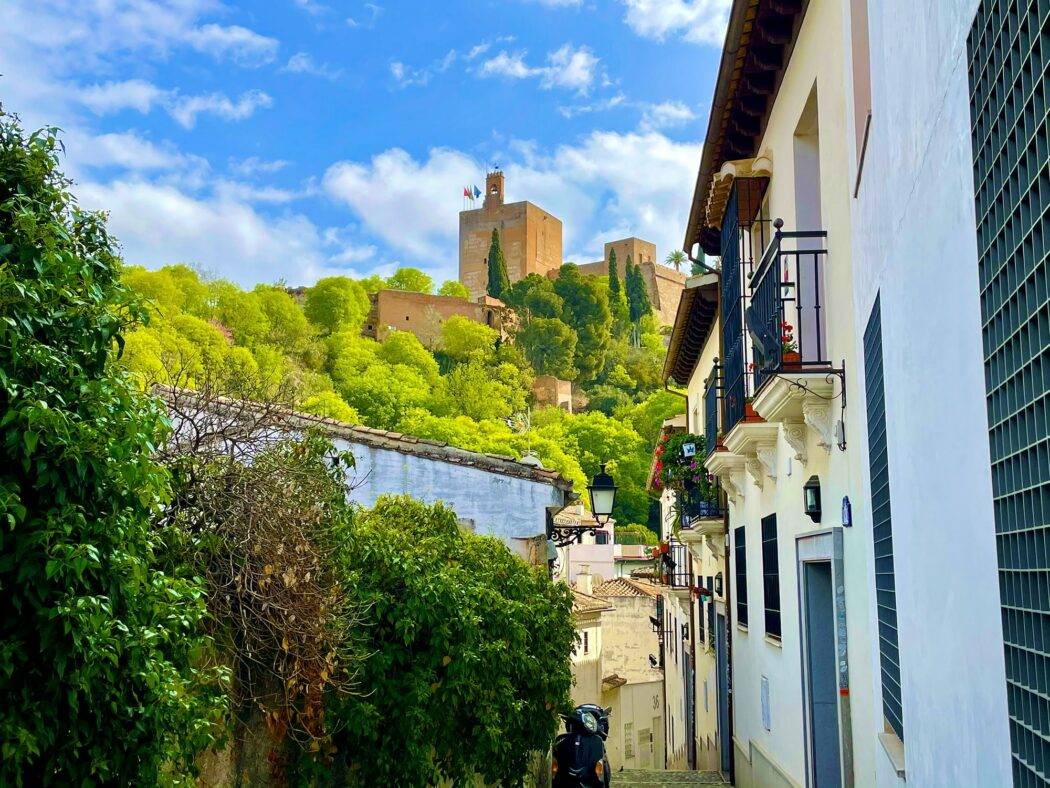In order to get to know the Jewish quarter of Grenada first you have to take a walk and read a bit of Sephardic history, but not before considering a Free Tour Realejo that we break it down for you during a little walk with the official guides and prepared on the history of the Jews of Grenada y the Realejo of Granada.
Jewish neighborhoods there are several: The Realejo, the Mauror and the Barranco del Abogao. But we focus mainly on the most historically preserved areas, although it is a bit difficult to see something intact from the Sephardim of Granada since the rest of the cultures, over time, have been destroying everything built by this ambitious and excellent minority.
La Jewish quarter of Granada it unfolded between the two main rivers of the city, El Darro and El Genil.
Today barrel organ (lower Jewry) and mauror (high Jewish quarter) have an aesthetic and labyrinthine alleys that resemble those of the Albaicín but with a more intimate look and feel.
It's right up the hill Alhambra, to the southwest of the fortress (on the opposite side to the Albaicín). And from the barrel organ It is where the name of the city comes from, “Granada”, did you know? In its beginning the Arabs called this area highlighted by the intellectuality of its inhabitants, economy, business and science studies, "Garnatha Al-Yahud" o “Madinat Garnata” that this last denomination was assigned to the area that began from the Cuesta de Gomerez (the forests of the Alhambra). They say that it began in the XNUMXth century, but some sources do not confirm this fact, they could have been here in Roman times (XNUMXth century).
The Sephardim from Granada They made the beginnings of Garnata a very prosperous period that enjoyed great importance during the settlements of the Arab-Muslim dynasties after them (Ziríes and Nazaríes). What's more, if there weren't such prominent Jews, we doubt the possible existence of the city's emblematic heritage sites (Alhambra and Albaicín) that we enjoy so much today.
Its people, always so qualified for evolution and advancement, used to work as: artisans, merchants, merchants who traveled continuously, which gave them the guaranteed possibility of being up to date with new data and information, whether medicine, botany, mathematics, astrology. , languages, technology, philosophy, etc. Being aware of new discoveries and news made them very valuable to the royal courts. Thus having a great culture in general. In medicine specifically they had a vast knowledge, all this made Garnata Al-Yahud a cosmopolitan neighborhood very intellectual people.
A few centuries later they will suffer what is not written, the oppression in the Hispano-Muslim period, the murder and torture of inquisitors and the Catholic people. Finally, the Catholic Monarchs sign the expulsion treaty after the insistence of the Spanish Inquisition, giving the Jewish community three months to leave Hispaniar, after the capture of Granada on January 2, 1492, in exile they could not take anything with them of value such as: coins, gold, silver, silk, horses, etc., it could be said that they basically left with what they were wearing, for some Sephardim the escape was to Portugal, where 5 years later they would sign the expulsion treaty in the Portuguese court.
It is probably, together with the gypsies, one of the most suffered cultures in Europe.
What to see in Realejo:
- The statue of the Yehuda.
- House of Shots.
- Placeta The Laundry of the Sun.
- El Campo del Príncipe (there is a wide range of bars with terraces).
- The Royal Room of Santo Domingo (admission costs €2 per person).
- The church of Santo Domingo.
- Mariana de Pindeda Square.
- Vermilion Towers
- The Mauror

